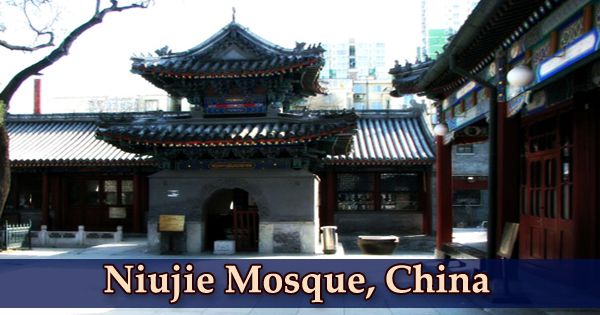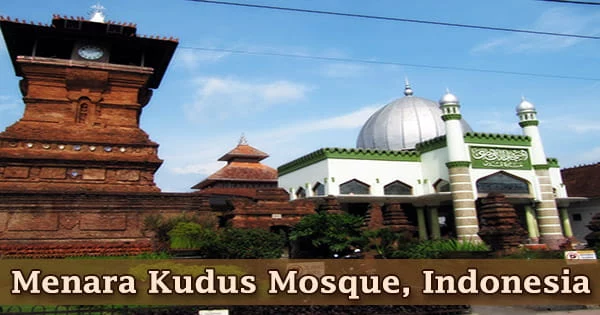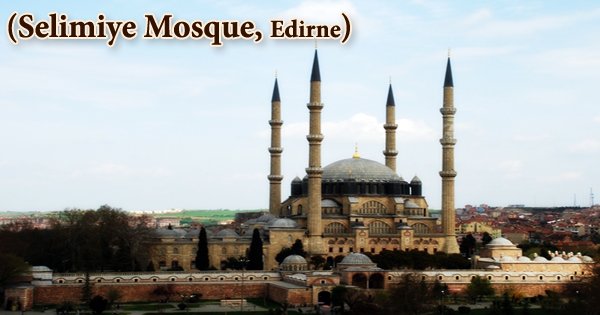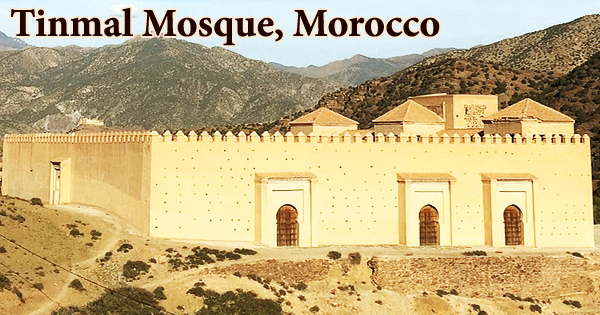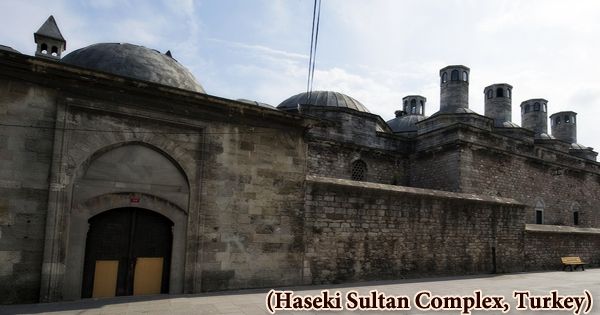The Niujie Mosque (simplified Chinese: 牛街礼拜寺; traditional Chinese: 牛街禮拜寺; pinyin: Niú Jiē Lǐ Bài Sì; Wade–Giles: Niu-chieh Li-pai-ssu “Oxen Street House of Worship” or Chinese: 牛街清真寺; pinyin: Niú Jiē Qīng Zhēn Sì; Wade–Giles: Niu-chieh Ch’ing-chen-ssu “Oxen Street Mosque”) which dates from over 1,000 years ago, is Beijing’s oldest mosque. The original Islamic elements have been replaced with Chinese architectural characteristics in various reconstructions. It is an ancient mosque that is considered to be one of China’s oldest and most important mosques. It was built in 996 during the Liao Dynasty and was renovated and expanded during the Qing Dynasty’s Kangxi Emperor (r. 1661–1722). The Mosque is the largest and oldest in Beijing, and it is located in the Niujie section of Beijing’s Xicheng District. It is the spiritual center for the 10,000 Muslims who live in the neighborhood. Outside, the building is Chinese, but it appears weird or archaic. The inside of the structure has an Arabic feel to it. It is Beijing’s largest mosque and a significant religious site for Muslims. The juxtaposition of Arabic and Chinese architecture and traditions is fascinating, as is the shopping on Cow Street. Before merging with Xicheng in 2010, it was part of the Xuanwu District. The mosque is located in Niujie in Xicheng District, which is Beijing’s largest Muslim neighborhood. The Niujie Mosque is roughly 10,000 square meters in size. The mosque’s cultural and architectural elements are a combination of Islamic and Han Chinese. There are no domes or minarets, but it does contain a lovely prayer hall that serves the local Hui Chinese Muslims, who also run the many halal butchers in the Ox St area (Niu Jie). Unlike the Uyghurs, who speak a Turkic language and are racially separate, the Hui are officially designated as an ethnic group (Beijing’s largest). They are culturally very close to the Han Chinese. Hui ancestors can be traced back to Persian missionaries in China, and then to Islamic warriors from Central Asia fighting for the Mongol Yuan dynasty, which conquered China in 1279. The main prayer space measures 600 square meters and can accommodate over 1,000 attendees. The wooden mosque has important cultural treasures and tablets, including an upright tablet of an emperor’s order issued in 1694 during the Qing Dynasty.

The Screen Wall is almost 30 meters long and features wonderful patterns such as plants, geometric lines, and Arabic letters that are commonly used to decorate mosques by Muslims. During the Liao Dynasty (916–1125), the mosque was first built in 996. The mosque was built by the local Muslim community utilizing traditional Chinese architecture, with the difference that it features Arabic calligraphy on the inside. It was created by Nazaruddin, the son of an imam, at first. The mosque was reconstructed in 1443 under the Ming Dynasty after being destroyed by Genghis Khan’s forces in 1215. A set of smaller halls, some of which are used as schools, and stele pavilions are located at the rear of the main prayer hall. A bathhouse is also available. Arabic lettering and geometrical patterns are used to decorate the walls. An inscription in Arabic and Chinese dates from 1496, but it has been illegible over the ages. A minaret stands in the center of this part, from which the muezzin invites the faithful to prayer five times a day, starting at dawn. The tombs of two travelers, one from Iran and the other from Uzbekistan, are located on the grounds. In 1496, Muslim eunuchs contributed funds to the repair of Niujie Mosque. Under the Qing Dynasty, it was extensively extended in 1696. The nearby marketplaces were recognized for Halal meat and mutton during the Qing Dynasty, and the presence of Muslim food stores with Arabic signs along the road is still quite significant today. The actual name of the Mosque is Lǐbàisì, which is given by the Chenghua Emperor in 1474, since it is located in Oxen Street (Niú means Oxen and jiē means street) this Mosque is simply called Niujie. It is presently one of north China’s most important mosques. The two-story hexagonal Pavilion for Observing the Moon’ (望月楼; Wàngyuèlóu) at the complex’s front is claimed to be where Islamic astronomers calculated the lunar calendar. On Nui Jie, take note of the Spirit Wall that guards the entry, which is a feature of all Chinese temples, regardless of denomination. The mosque faces Mecca. According to the Siheyuan layout, it has two courtyards. A worship hall, the Wangyue Building, the Building for Publicising Etiquette, a lecture hall, the Tablet Pavilion, the Twin Pavilions, and bathrooms are among the facilities available. The mosque houses an antique Quran that is over 300 years old, as well as tombs of Arabian sages and a Ming dynasty incense burner. A library with historical texts is also located within the mosque. Islam was most likely introduced to China during the Tang Dynasty, and Muslims presently make up 4% of the Chinese population. Many of the fences and walls are painted in a vibrant crimson color. The copper red pillars contrast sharply with the dark green girders. Between some pillars, there are “Happy Doors” that are a kind of arch. Instead of the Arabic pointed arch, these arches are employed. The contrast of colors is stunning and unique. There are around 210,000 Muslims in Beijing. In the past, relations between Muslims and non-Muslims have been tense. During the Cultural Revolution, when religious structures were being targeted, the late Premier Zhou Enlai intervened personally to spare the Ox Street Mosque from destruction. The People’s Republic of China’s government frequently invites delegations from Islamic countries to visit the Niujie Mosque. The Niujie Mosque attracts Han Chinese and Hui tourists, as well as Muslims from other countries. On Fridays, the mosque is bustling with worshippers, though non-Muslims are not permitted to enter during prayer times.
